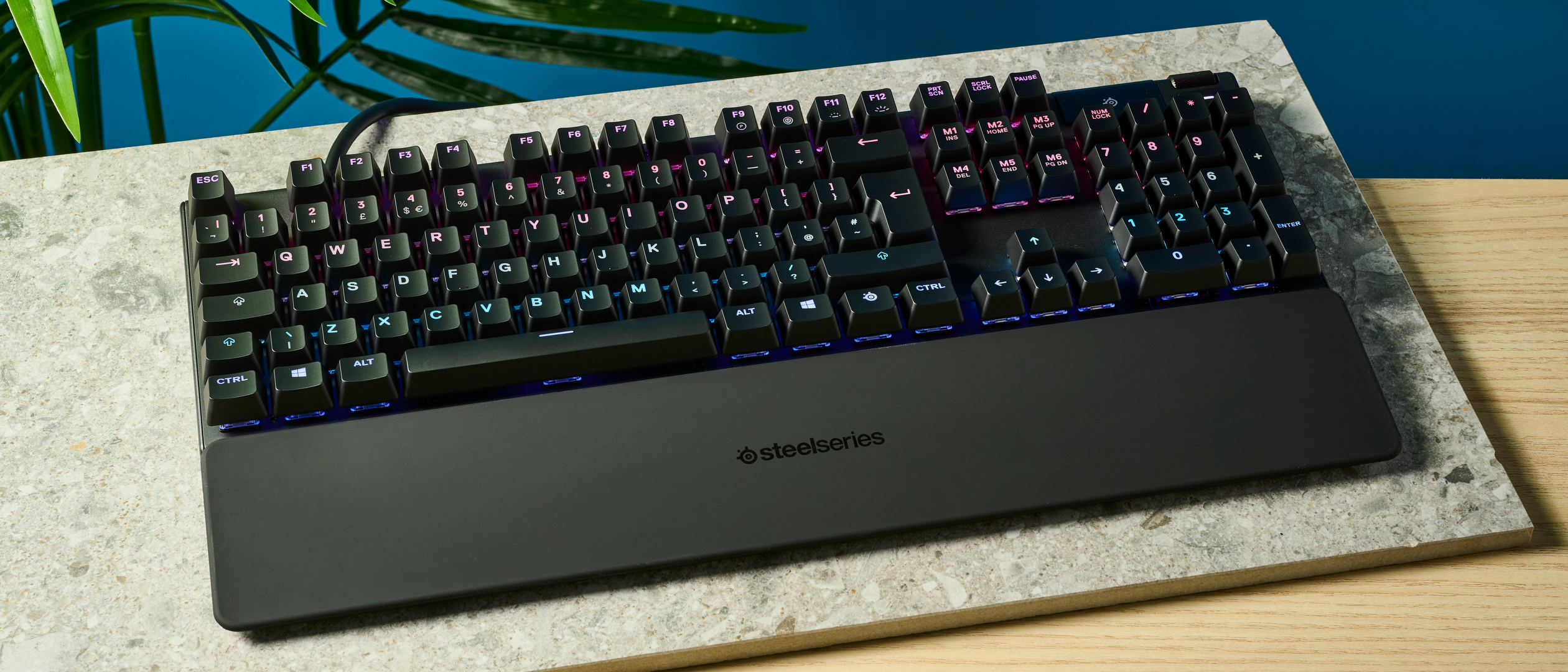Tom's Guide Verdict
The SteelSeries Apex Pro wows with its premium construction, reactive RGB lighting, detailed companion software, and typing experience. Its gaming performance is its greatest strength, with Hall Effect magnetic switches that let you adjust the actuation points of most keys, plus an OLED screen to customize the keyboard on the fly. If you can overlook the subpar wrist rest, the 43 keys whose actuation you can’t adjust, and be satisfied with the 1,000Hz polling rate this could be the board for you.
Pros
- +
Premium construction
- +
Excellent typing experience
- +
Great gaming performance
- +
Reactive backlighting
- +
OLED display for pro customization
Cons
- -
Polling rate is slower than competitors’
- -
Limited actuation point adjustments
- -
Subpar wrist rest
Why you can trust Tom's Guide
Looking for one of the best gaming keyboards around, that boasts ultimate gaming performance, a gorgeous design, and can double as a productivity board, too? Look no further than the SteelSeries Apex Pro — a top-notch peripheral that will elevate your gaming and computing experience.
The Apex Pro is one of the most customizable keyboards I’ve tested. Thanks to its Hall Effect magnetic switches, you can adjust each key’s actuation point to suit your gaming style and the OLED screen lets you adjust this on the fly. You can also fine-tune the reactive RGB lighting which, I must say, looks beautiful.
That isn’t to say the keyboard is flawless, as you can set actuation levels for only 61 keys. The polling rate pales in comparison to that of the Corsair K70 Max and Razer BlackWidow V4 75%, and the accompanying wrist rest could have been of much higher quality.
To find out what makes this keyboard so good, read my full SteelSeries Apex Pro review.
SteelSeries Apex Pro review: Specs
| Specs | SteelSeries Apex Pro |
|---|---|
| Price | $199 / £199 |
| Switches | Analog Hall Effect magnetic switches |
| Keycaps | ABS |
| Construction | Aircraft-grade aluminum alloy |
| Layout | 100%, 104 keys |
| Operating system | macOS, Windows |
| Backlighting | RGB |
| Polling rate | 1,000Hz |
| Paired devices max | 1 |
| Connectivity | Wired only |
| Measurements | 17.19 x 5.48 x 1.58 inches |
| Weight | 2.14lbs (970g) |
| Colors | Black |
SteelSeries Apex Pro review: Cheat sheet
- What is it? A full-size gaming keyboard with Hall Effect magnetic switches
- Who is it for? For competitive gamers looking for the ultimate gaming experience
- How much does it cost? The SteelSeries Apex Pro is available for $199 / £199
- What do we like? Its premium construction, USB passthrough, gaming performance, typing experience, OLED screen, reactive backlighting, and detailed companion software
- What don’t we like? You can set actuation levels for only 61 keys, the wrist rest could have been better, and the polling rate is low compared to other keyboards
SteelSeries Apex Pro review: The ups
The SteelSeries Apex Pro does so many things right. From its premium construction and body that hosts a USB-A port, to the excellent gaming performance and detailed companion software, there’s a lot to love about this board.
Premium construction
The SteelSeries Apex Pro boasts exceptional build quality, featuring a high-quality plastic bottom case and an aircraft grade aluminum top cover. It also features a low-profile-style black steel chassis and elevated keys.
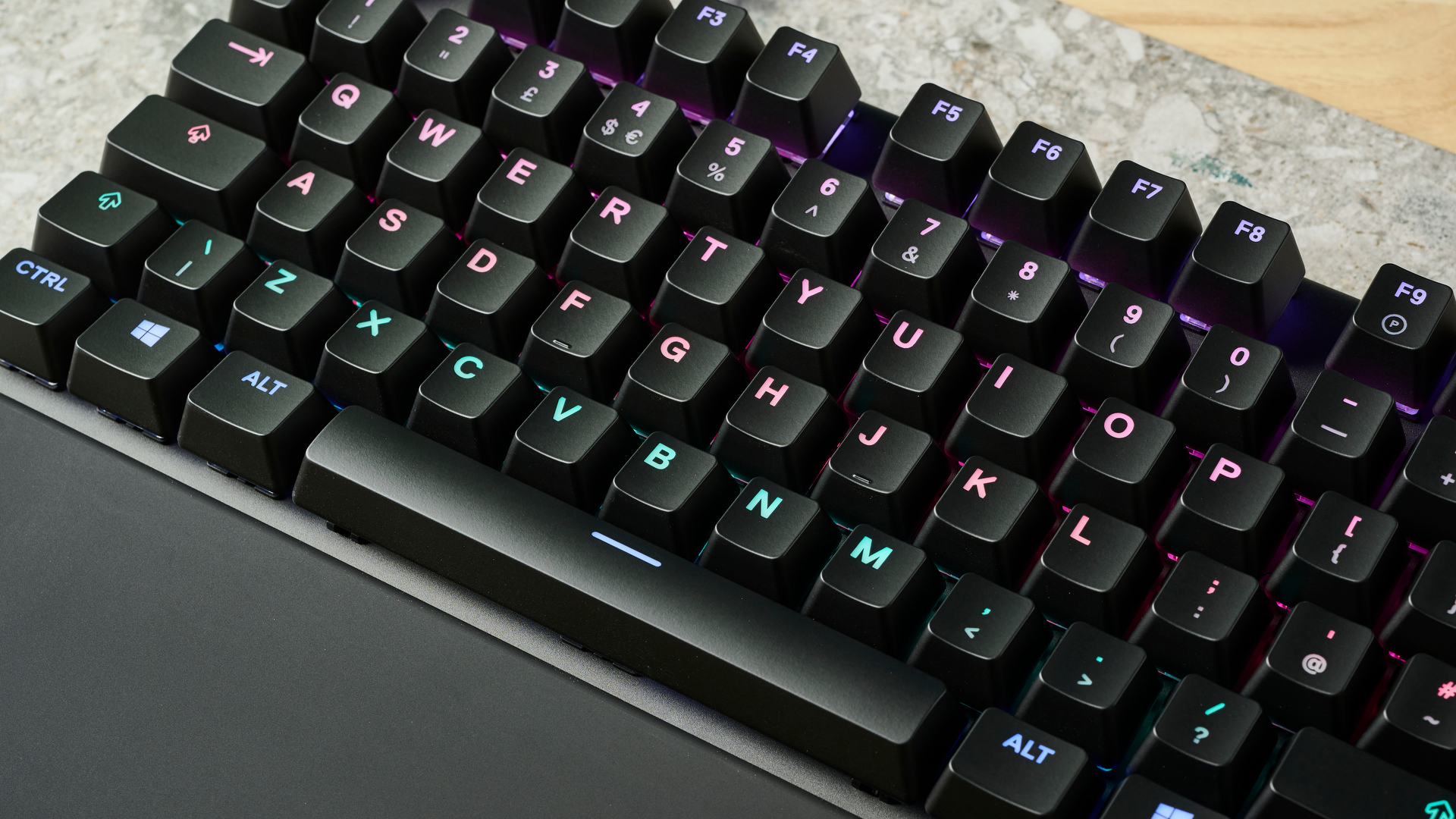
Measuring 17.19 x 5.48 x 1.58 inches and weighing 2.14lbs, this full-size keyboard is best suited to staying put in one place. Contributing to that is the hefty pronged USB-A cable. The rubber-coated cable isn’t detachable and measures 1.8m. It ends in two USB plugs, as one is needed for the USB passthrough. If you value portability, the SteelSeries Apex Pro Mini ($179) is smaller, measuring 11.5 x 4 x 1.6 inches, and weighs just 1.34lbs.
You’ll find an excellent cable management system on the back. You can snap the Apex Pro’s cable into one of three long slots and extend it outwards based on the location of your PC’s port.
USB passthrough
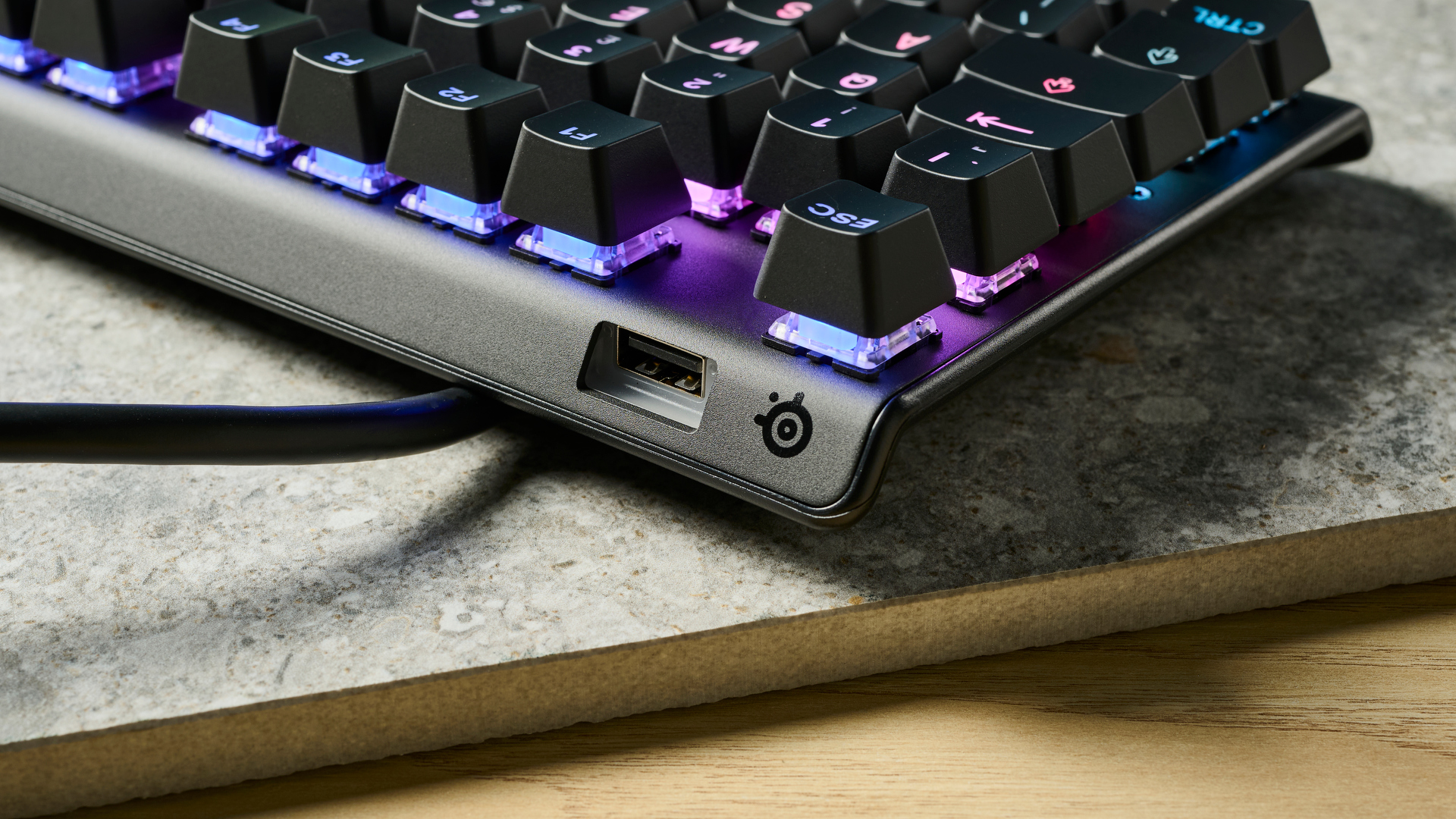
This brings me to my next point: USB passthrough. There’s a USB-A port on the SteelSeries Apex Pro, next to the subtle SteelSeries logo, which basically frees up a USB port on your PC. You can plug in thumb drives or other peripherals, like mice, into this port.
Gaming performance
The Apex Pro employs SteelSeries’ OmniPoint 2.0 switches, which boast a response time of 0.7ms, according to the manufacturer, and a minimum actuation of 0.4mm. The most attractive feature is the per-key actuation. The Apex Pro lets you change the actuation point for most keys: anywhere between 0.4mm and 3.6mm, represented by a 1 to 10 scale in the SteelSeries GG software. A lower actuation point will require a light touch to activate and vice versa.
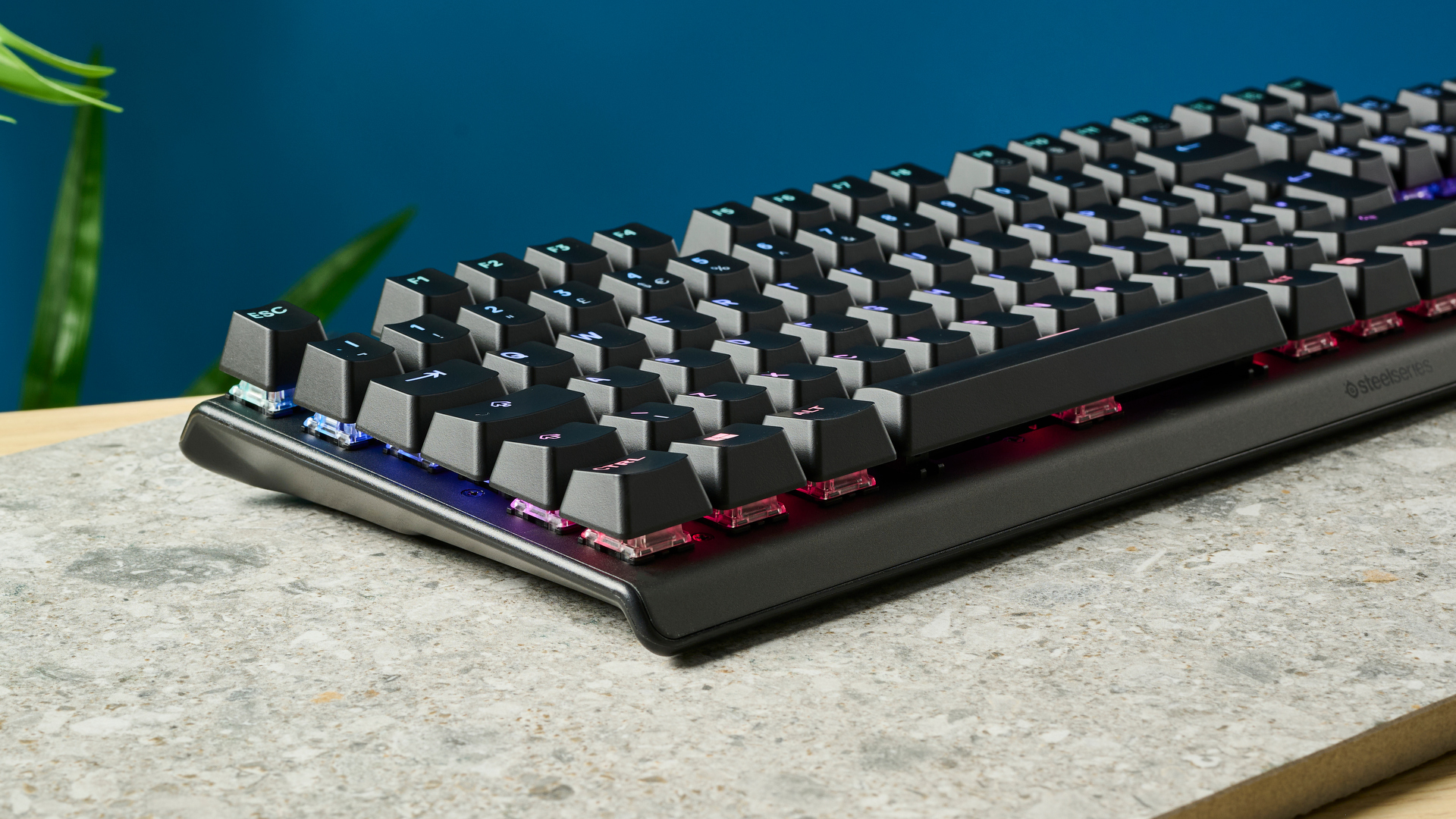
Per-key actuation is really handy for gaming. In Counter-Strike: Global Offensive, I set the actuation of the movement keys to 0.4mm so that my movements could register faster, and I didn’t have to worry about pressing action keys. You can also assign double actuation points to the keys, which means that you can essentially assign macros to longer presses. For example, in CS:GO, I set the secondary actuation point of the W key as a macro for shift-W, which allowed me to walk with a half-press and sprint with a full-press. This way, you can free up the shift key for other actions.
This per-key actuation functionality is available on our favorite gaming keyboard, the Corsair K70 Max ($230), too. But if you want to save $30, the Apex Pro is an excellent alternative.
Additionally, much like its mini sibling, the Apex Pro features Rapid Trigger input. Essentially, this means that there is no reset. As soon as the switch is released, it resets, so you can press and repress much faster. This is a handy feature in first-person shooter titles. In CS:GO, I found it very useful since strafing was so easy. The keyboard’s companion software allows for per-key Rapid Trigger sensitivity adjustments.
Typing experience
If the SteelSeries Apex Pro is going to stay stationary on your desk, chances are you might be using it for a bit of work too. As well as being a great gaming keyboard, it doubles as a good productivity board too. You can also set separate profiles for work and play, and choose the one you need via the OLED screen (more on this soon).
| Keyboard | Type test speed (WPM) | Type test accuracy |
|---|---|---|
| Gamakay LK75 | 95 | 94.32% |
| MacBook Air M2 built-in | 91 | 92.06% |
| Lemokey X3 | 90 | 92.01% |
| Turtle Beach Vulcan TKL | 90 | 89.02% |
| SteelSeries Apex Pro | 90 | 92.10% |
| Nikita’s overall averages (all keyboards) | 83.3 | 91.24% |
I consider myself a fast typist, and typing on the Apex Pro has been a delight. A typing test taken on 10fastfingers.com further solidified my belief that this is a great keyboard for typing.
Customization on the fly
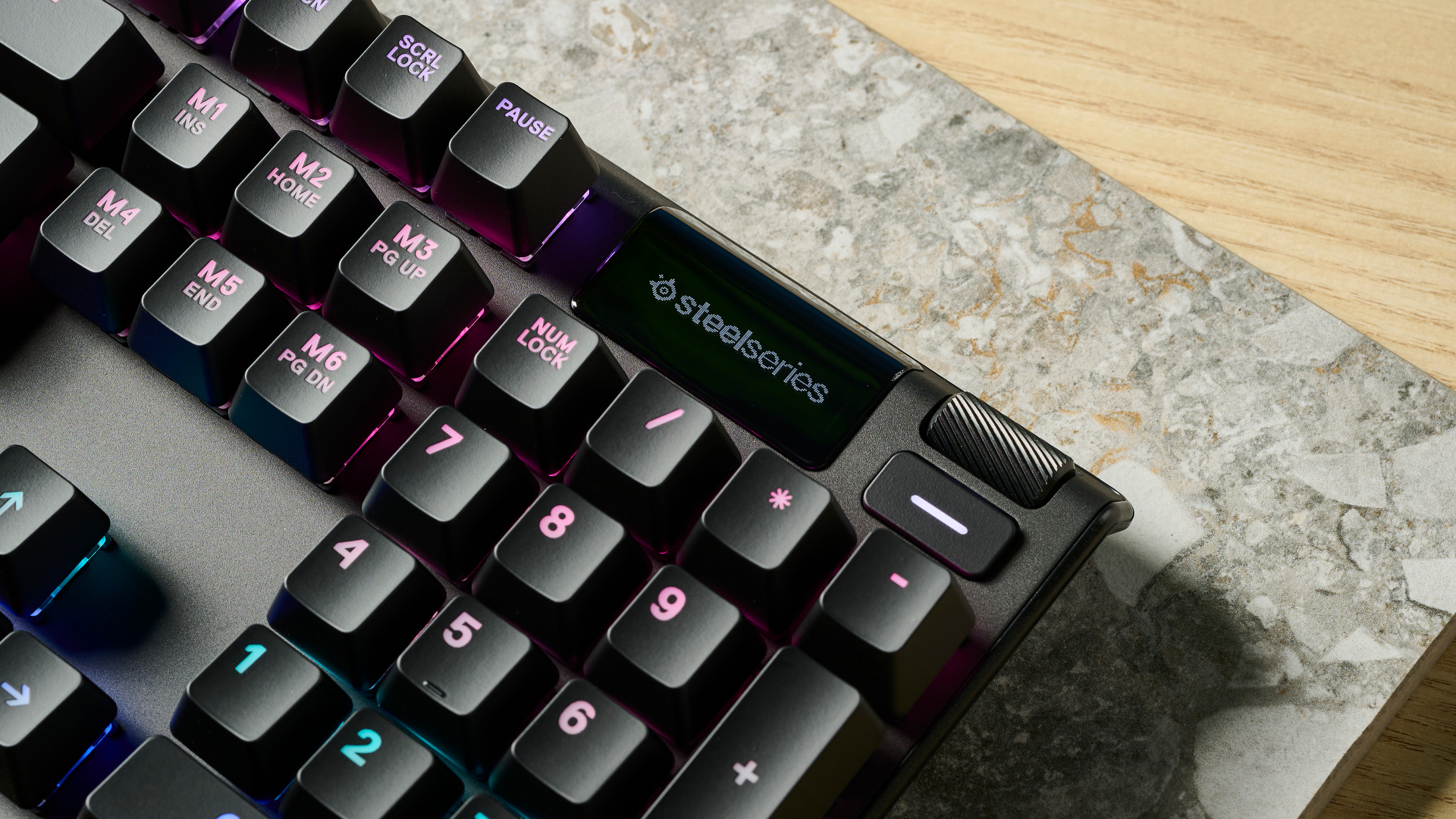
One of the SteelSeries Apex Pro’s biggest selling points is located in the top right corner. There, you’ll find a small OLED screen, a button to help navigate through menus, and a volume dial. This screen lets you control most keyboard functions without ever having to dive into the SteelSeries GG software on a computer. You can change RGB lighting settings, switch profiles, adjust key actuation, and even record macros on the fly.
If you press a key, the screen will also show you its actuation point. This can come in handy since you can adjust each key’s actuation point and you may not always remember what WASD are set to, for example.
Gorgeous, reactive backlighting
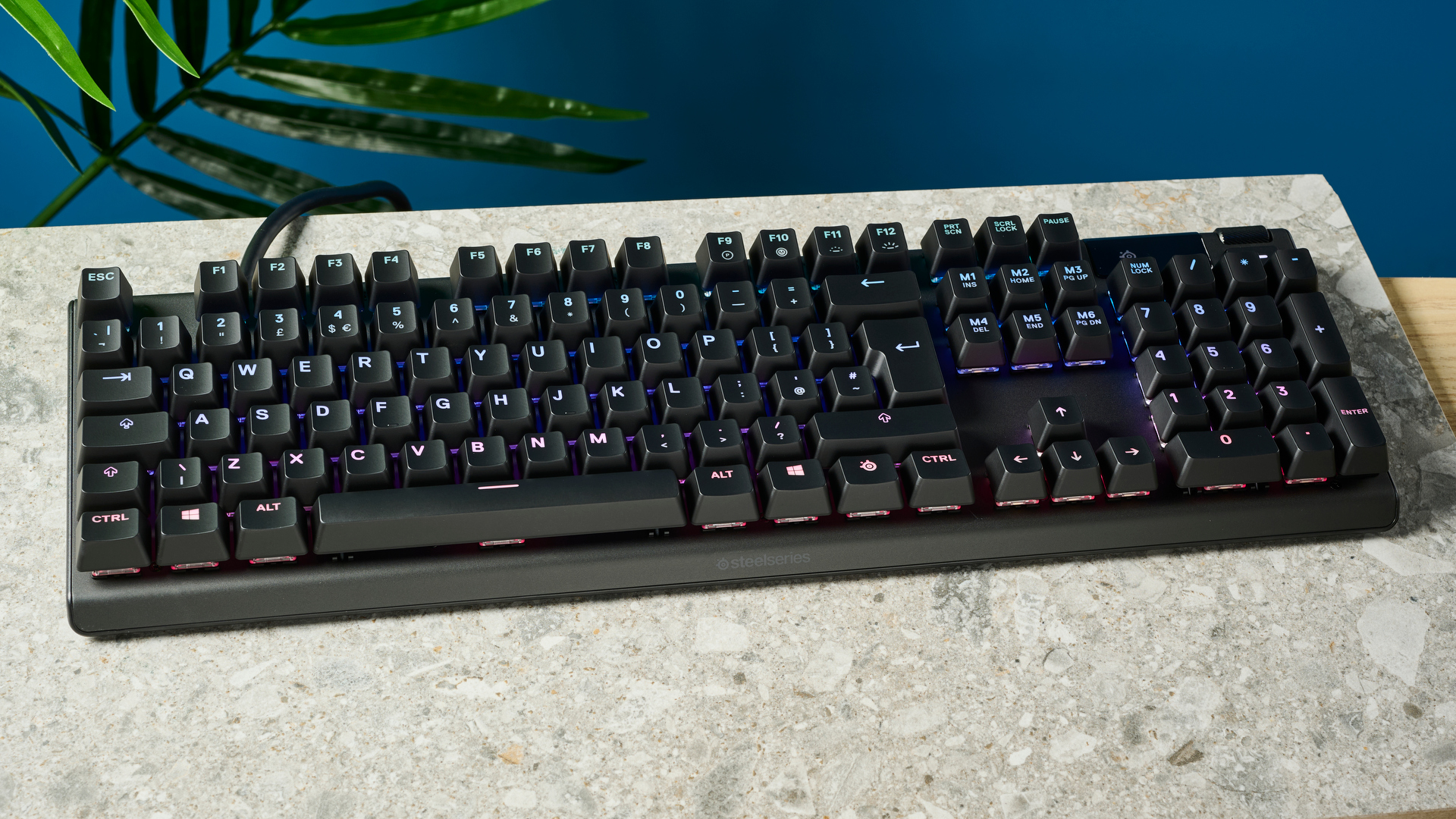
One of the most visually striking features of the SteelSeries Apex Pro is its gorgeous RGB backlighting. The lighting pops and beautifully illuminates the chassis. Vapors is my favorite preset of the lot, as the shades of purple and pink send a wave of white across the board when a key is pressed. Reactive RGB lighting has become my new favorite form of backlighting because of this keyboard.
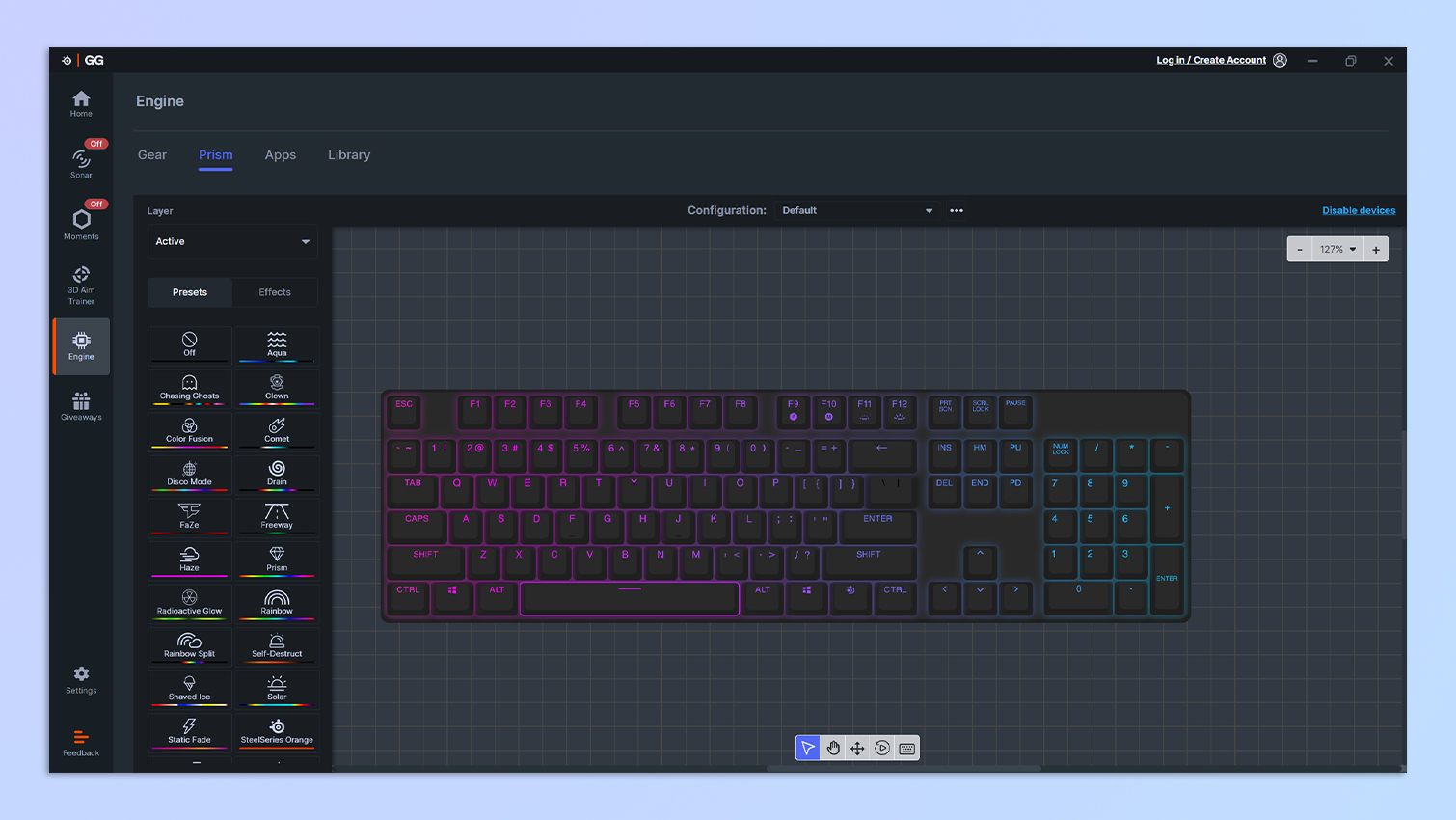
While the Apex Pro’s lighting is fully customizable through SteelSeries GG where you can choose the effects and change brightness, you can also do this via the OLED screen. The OLED screen illumination menu lets you adjust what happens when you’re away from the keyboard (AFK mode), and even select how long it takes for the lighting to time out — running from 5 seconds to never.
Detailed companion software
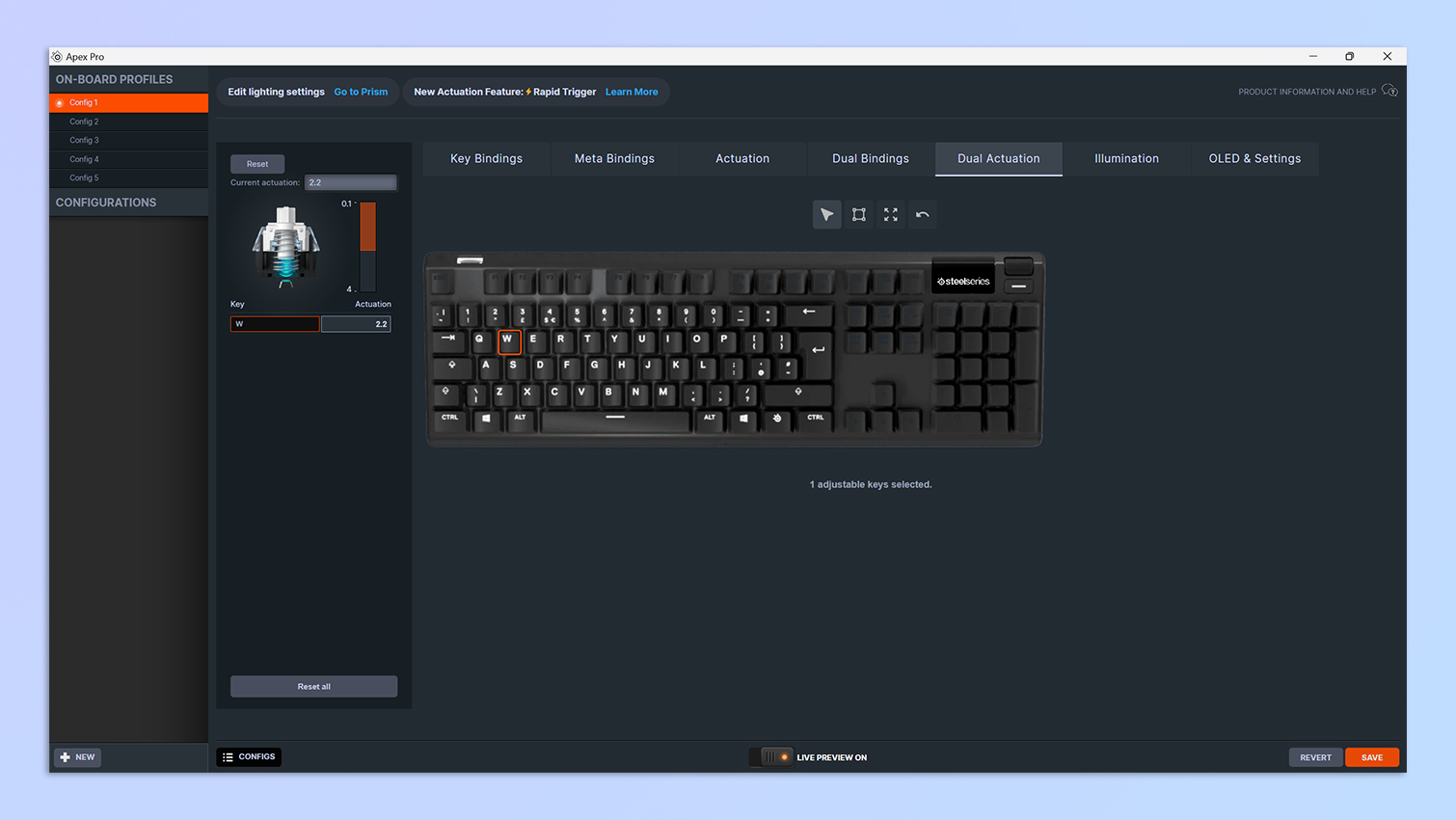
I’m a sucker for detailed companion software — especially one that’s easy to use, unlike Armoury Crate for the Asus ROG Strix Scope II 96 ($179). SteelSeries GG, available on macOS and Windows, is the most detailed companion software I’ve used so far. It lets you quickly adjust actuation and set dual actuation points, remap keys and map meta bindings, change the RGB backlighting and adjust the effects, and even upload GIFs and static images to the OLED screen.
If you want more control over the backlighting, you can access Prism through SteelSeries GG to adjust per-key lighting and really make the keyboard your own.
SteelSeries Apex Pro review: The downs
The SteelSeries Apex Pro is an awesome keyboard that doesn’t give you much to complain about. But only 61 of the 104 keys have per-key actuation functionality, other keyboards have better polling rates, and the wrist rest isn’t the most comfortable.
Low polling rate
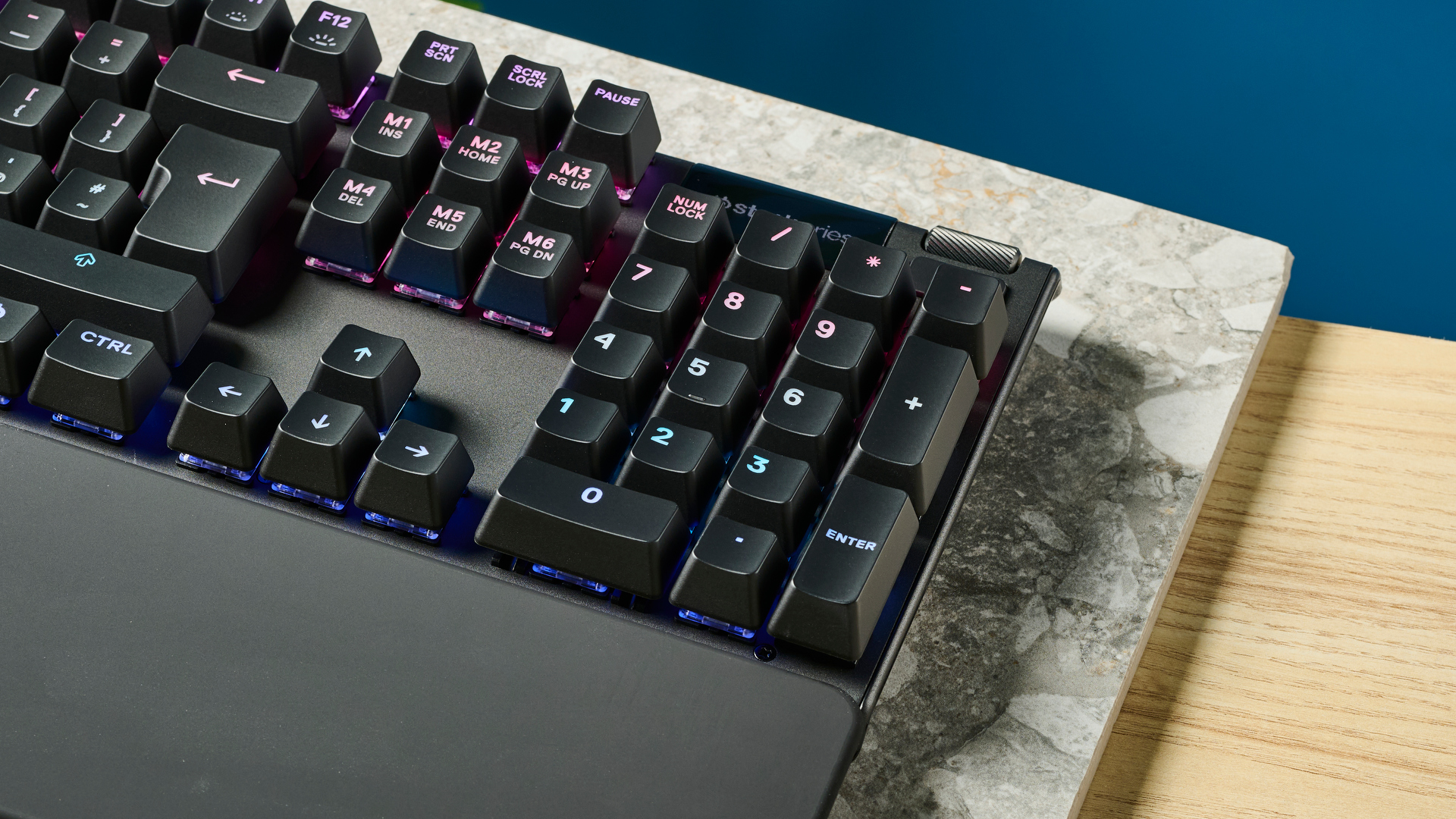
The SteelSeries Apex Pro has a 1,000Hz polling rate, which I measured using clickspeedtester.com. While this is good and will satisfy most gamers, it isn’t as quick as some of the other competitive gaming keyboards out there. It is slower than the Razer BlackWidow V4 75% ($189) and the Corsair K70 Max, both of which offer a blistering 8,000Hz polling rate.
This might be a turn off for competitive eSports players who want to push their keyboard to the absolute limit.
Limited actuation point adjustments
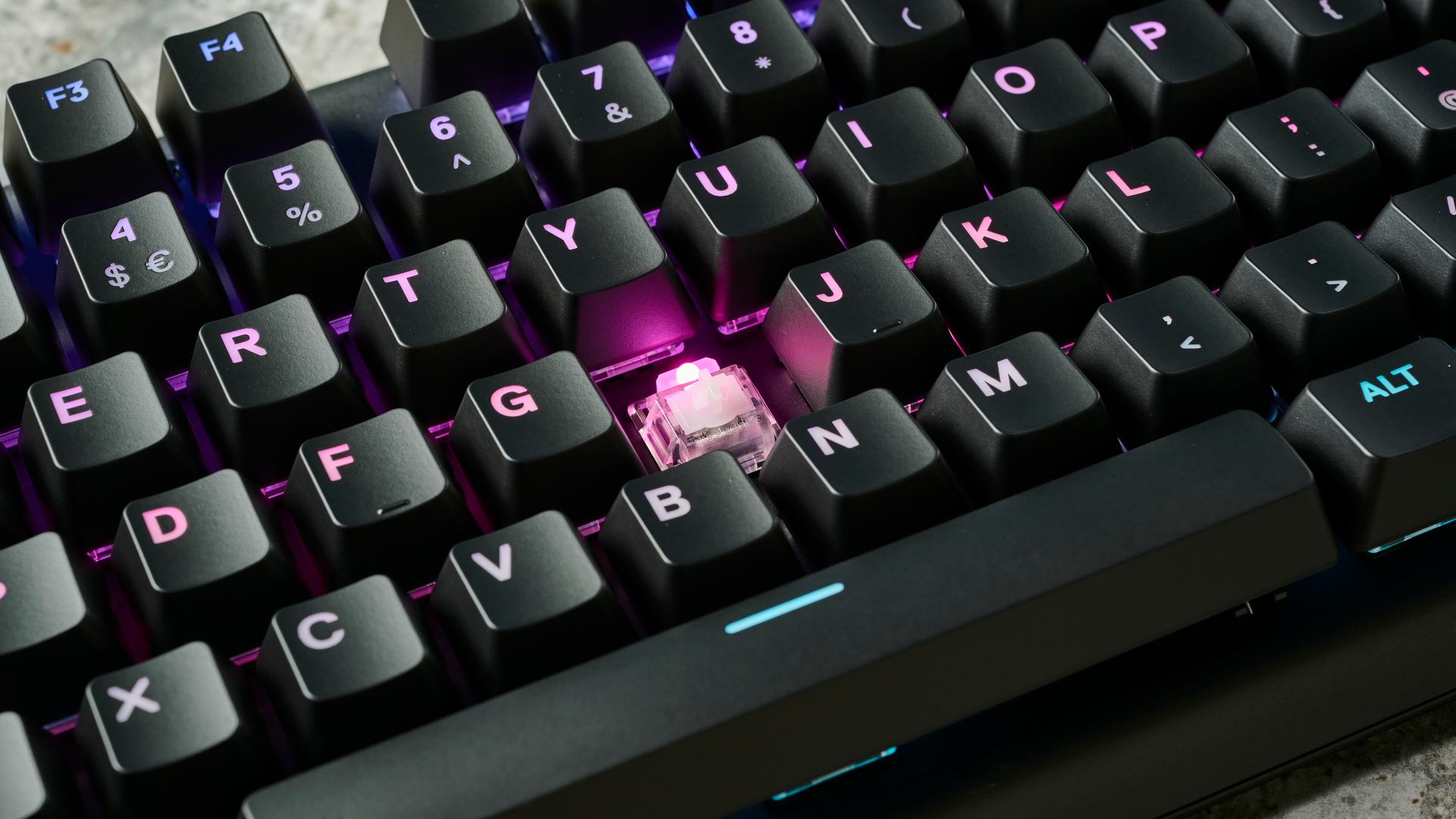
The SteelSeries Apex Pro is a top-notch gaming peripheral, and while its per-key actuation functionality is great, it’s limited since you can only reprogram 61 keys. That leaves you with 43 keys you can’t reprogram (including the numpad) since they use traditional Cherry MX Red switches. In comparison, you can change the actuation point of every single key on the Corsair K70 Max. But if you want a SteelSeries keyboard that lets you adjust each key’s actuation, check out the Apex Pro Mini instead.
Additionally, while it’s useful that you can change the keys’ actuation via the OLED screen, you can only change these in increments of 0.2mm, so it might not be as accurate as setting them in increments of 0.1mm. Also, you can’t adjust per-key actuation via the OLED screen, only the actuation of the entire board, which will be frustrating if you want to only change for certain keys, and/or if you have laboriously tweaked individual key actuation points already.
Subpar wrist rest
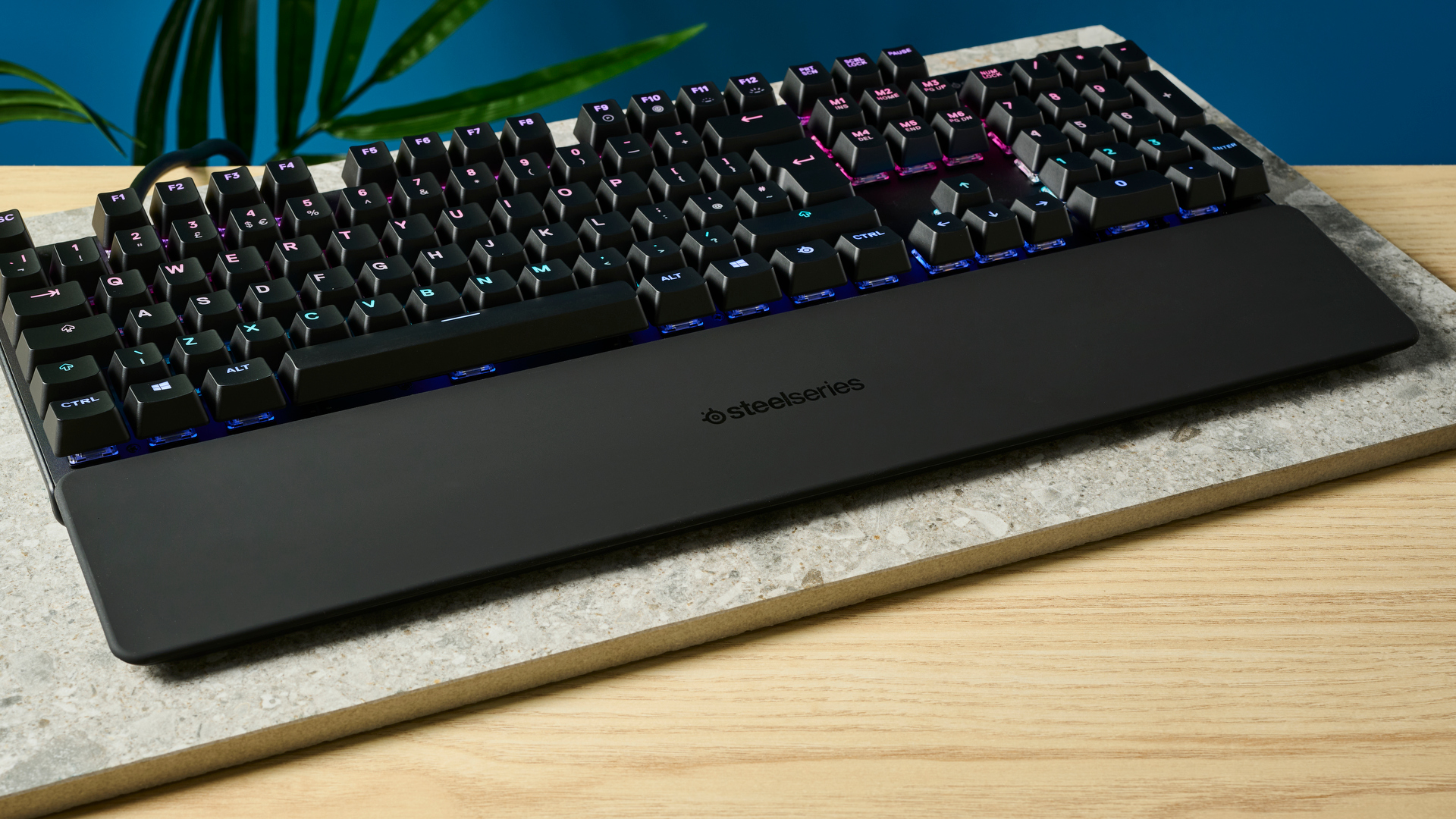
The SteelSeries Apex Pro comes with a magnetic wrist rest — not plush, but instead a hard, supportive surface with a matte finish. I don’t like it as much as the leatherette wrist rest that came with the Asus ROG Strix Scope II 96, and for $199, I would have really appreciated better quality from SteelSeries. But hey, a poor wrist rest is better than none.
SteelSeries Apex Pro review: Verdict
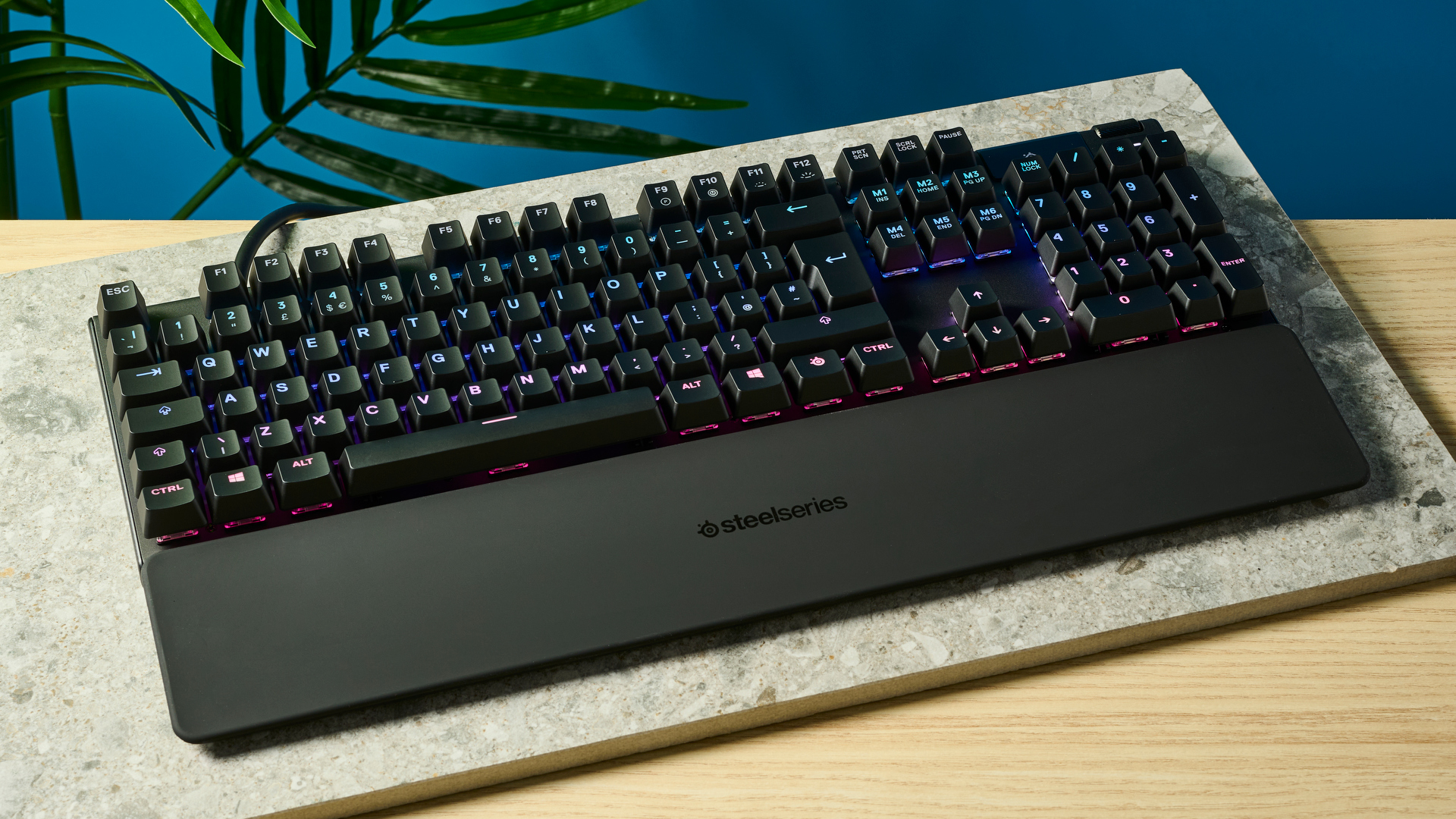
What the SteelSeries Apex Pro accomplishes is impressive. It’s a keyboard that can be truly you, thanks for the amount of customization it offers. The Hall Effect magnetic switches are sure to attract competitive gamers, and the per-key actuation functionality is excellent for both gaming and productivity. Configurable profiles add to the keyboard’s versatility too. The OLED screen is implemented really well, and you don’t need to wade through the software’s various settings to quickly change actuation or the gorgeous reactive RGB lighting.
But actuation adjustment is restricted to 61 keys, and the polling rate isn’t nearly as high as that of the Razer Blackwidow V4 75% or the Corsair K70 Max. The wrist rest could have been of higher quality too, but if you’re not too bothered by that, the Apex Pro is well worth the money.

Nikita is a Staff Writer on the Reviews team at Tom's Guide. She's a lifelong gaming and photography enthusiast, always on the lookout for the latest tech. Having worked as a Sub Editor and Writer for Canon EMEA, she has interviewed photographers from all over the world and working in different genres. When she’s not working, Nikita can usually be found sinking hours into RPGs on her PS5, flying a drone (she's a licensed drone pilot), at a concert, or watching F1. Her work has appeared in several publications including Motor Sport Magazine, NME, Marriott Bonvoy, The Independent, and Metro.
